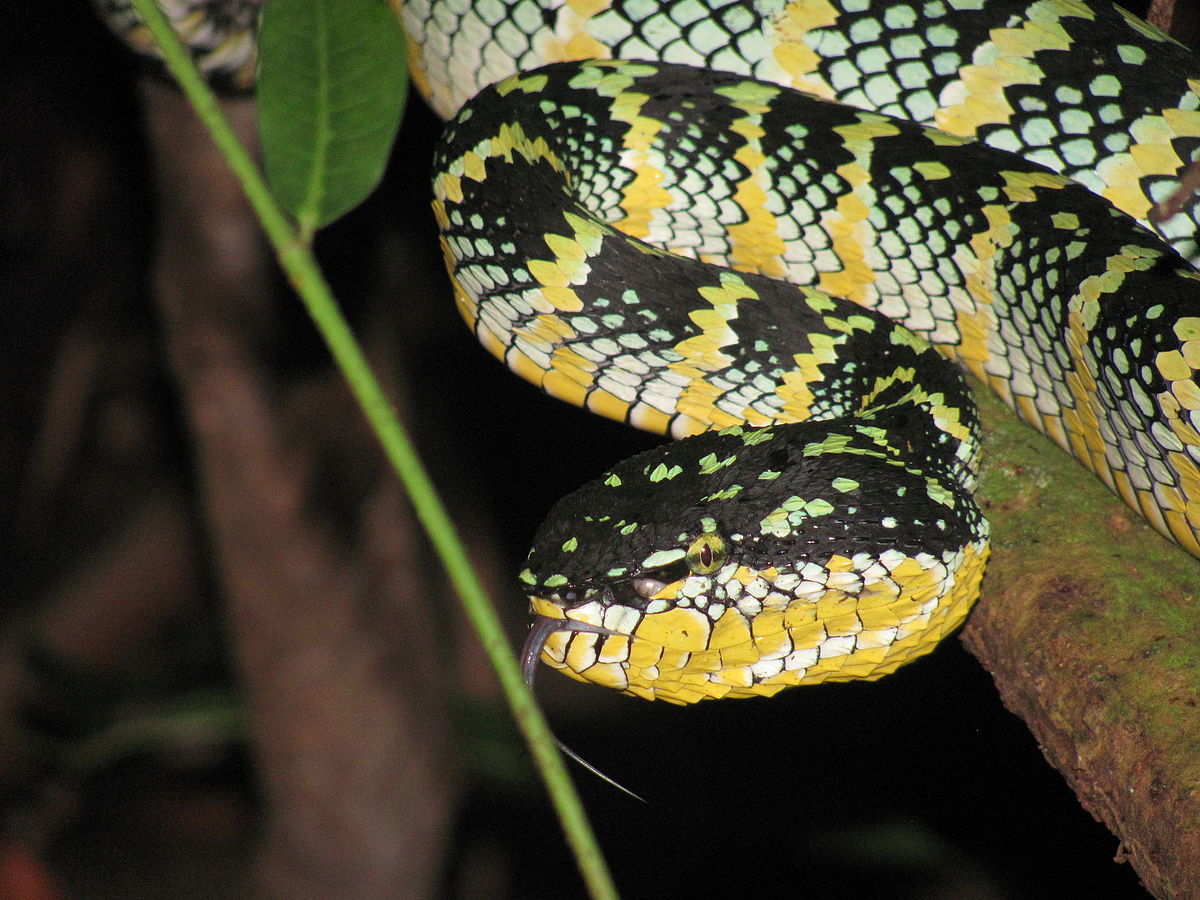
If you’re fascinated by the mesmerizing world of snakes, then the Temple Pit Viper is sure to captivate your attention. This awe-inspiring reptile is renowned for its stunning appearance and intriguing behavior. With its venomous fangs, vibrant colors, and unique hunting techniques, the Temple Pit Viper has earned a reputation as a true marvel of the animal kingdom.
In this article, we will delve into the remarkable world of the Temple Pit Viper and uncover 14 astounding facts about this elusive creature. From its habitat and physical characteristics to its diet and breeding habits, we will explore the many facets that make the Temple Pit Viper such a fascinating species. So, get ready to embark on a captivating journey through the realm of one of nature’s most enigmatic and awe-inspiring creatures – the Temple Pit Viper.
Key Takeaways:
- The Temple Pit Viper is a colorful and venomous snake found in Southeast Asia’s rainforests. Its stunning appearance and ambush hunting style make it a fascinating creature to learn about.
- This snake’s adaptability and ecological importance highlight its role as an apex predator, regulating the population of its prey and maintaining the balance of its ecosystem.
A Venomous Beauty
The Temple Pit Viper, also known as Tropidolaemus wagleri, is a stunning venomous serpent found in the rainforests of Southeast Asia. Its vibrant colors and intricate patterns make it a sight to behold.
Diverse Colors
The Temple Pit Viper displays a remarkable range of colors, including shades of green, yellow, blue, and even red. Its bright hues serve as a warning to potential predators, indicating its venomous nature.
Venomous Fangs
Equipped with long, hollow fangs, the Temple Pit Viper delivers a potent venom to immobilize its prey. Its venom contains a cocktail of toxins that disrupt the prey’s cardiovascular and nervous systems.
Arboreal Lifestyle
This species of snake is primarily arboreal, meaning it spends most of its time in trees. Its slender body and prehensile tail enable the Temple Pit Viper to navigate through the branches with agility.
Ambush Predator
The Temple Pit Viper is an ambush predator, patiently waiting for unsuspecting prey to pass by. It relies on its excellent camouflage and stealthy movements to strike swiftly and accurately.
Heat-Sensing Abilities
Like many other pit vipers, the Temple Pit Viper possesses specialized heat-sensing pits located on its head. These pits allow it to detect the body heat of prey, even in complete darkness.
Feeding Habits
This species primarily feeds on small mammals, birds, lizards, and even other snakes. Once its venomous bite immobilizes its prey, the Temple Pit Viper will patiently wait until the venom takes effect before devouring its meal.
Live Birth
The Temple Pit Viper is viviparous, meaning it gives birth to live young instead of laying eggs. The female nourishes the developing embryos through a placenta-like connection until they are ready to be born.
Healing Powers?
Traditionally, the venom of the Temple Pit Viper was used in certain Southeast Asian traditional medicines. However, the safety and efficacy of these remedies have not been scientifically proven.
Pop Culture Presence
The striking appearance of the Temple Pit Viper has made it a popular subject in the world of art and tattooing. Its vibrant colors and fierce reputation have inspired many artistic creations.
Elusive Nature
Due to its excellent camouflage and preference for high canopies, spotting a Temple Pit Viper in the wild can be quite challenging. Its elusive nature adds to the allure and mystique surrounding this intriguing snake.
Threats to Survival
Like many other snake species, the Temple Pit Viper faces numerous threats to its survival. Habitat loss, illegal wildlife trade, and persecution due to fear and misunderstanding are some of the factors contributing to its decline.
Adaptability
The Temple Pit Viper exhibits impressive adaptability, allowing it to survive in a variety of habitats ranging from lowland rainforests to montane regions. This adaptability has contributed to its widespread distribution.
Ecological Importance
As an apex predator, the Temple Pit Viper plays a vital role in maintaining the balance of its ecosystem. By regulating the population of its prey species, it helps prevent overconsumption and preserves the overall health of the ecosystem.
In conclusion, the Temple Pit Viper, with its stunning appearance and impressive adaptations, is a fascinating creature. Its venomous nature and arboreal lifestyle make it an incredible species to study and appreciate, highlighting the amazing diversity of animals found in the rainforests of Southeast Asia.
Conclusion
The Temple Pit Viper, with its stunning colors and unique characteristics, is truly an astonishing snake species. From its ability to blend seamlessly with its surroundings to its deadly venom, this viper is a fascinating creature that deserves our attention and respect.Its agile nature and excellent climbing skills make it a formidable predator, capable of capturing its prey with precision. Its infrared-sensing pit organs help it detect warm-blooded animals even in complete darkness, giving it a distinct advantage during hunting.Furthermore, the Temple Pit Viper’s venom contains powerful toxins that can cause severe tissue damage and paralysis. However, it is interesting to note that despite its venomous nature, this snake is generally non-aggressive and prefers to retreat rather than confront humans.The conservation of the Temple Pit Viper is of utmost importance due to its unique ecological role and its potential use in medical research. As we continue to study and appreciate this remarkable snake, we must also prioritize efforts to protect its natural habitat and ensure its survival for generations to come.
FAQs
Q: What is the scientific name of the Temple Pit Viper?
A: The scientific name of the Temple Pit Viper is Tropidolaemus wagleri.
Q: Where can Temple Pit Vipers be found?
A: Temple Pit Vipers are native to Southeast Asia, specifically found in countries such as Malaysia, Thailand, and Indonesia.
Q: Are Temple Pit Vipers venomous?
A: Yes, Temple Pit Vipers are highly venomous. Their venom contains potent toxins that can cause tissue damage and paralysis.
Q: How does the Temple Pit Viper hunt?
A: The Temple Pit Viper is an ambush predator. It waits patiently for its prey to come within striking range and then strikes with lightning speed, injecting venom to immobilize its prey.
Q: How do Temple Pit Vipers blend with their surroundings?
A: Temple Pit Vipers have incredible camouflage abilities. Their scales and markings help them blend into their environment, making them almost invisible to the naked eye.
Q: Are Temple Pit Vipers aggressive towards humans?
A: No, Temple Pit Vipers are generally non-aggressive towards humans. They prefer to retreat and avoid confrontation. Bites from these vipers are rare and usually happen when humans accidentally step on them or disturb their hiding place.
Q: Are Temple Pit Vipers endangered?
A: While there is no specific conservation status for the Temple Pit Viper, habitat loss and poaching pose threats to their population. Further research and conservation efforts are needed to ensure their long-term survival.
Explore nature's marvels beyond Temple Pit Vipers! Dive into lush rainforests, where countless wonders await. Uncover astonishing conservation efforts protecting our planet's precious resources. Marvel at Earth's incredible biodiversity, showcasing the astounding variety of life in every corner of the globe. From dense jungles to diverse ecosystems, there's always more to discover about our fascinating world. Join us on this exciting journey of exploration and revelation, as we unravel the mysteries of nature one fact at a time!
Was this page helpful?
Our commitment to delivering trustworthy and engaging content is at the heart of what we do. Each fact on our site is contributed by real users like you, bringing a wealth of diverse insights and information. To ensure the highest standards of accuracy and reliability, our dedicated editors meticulously review each submission. This process guarantees that the facts we share are not only fascinating but also credible. Trust in our commitment to quality and authenticity as you explore and learn with us.


